Hearing Science - Propagation of Sound
1/67
Earn XP
Description and Tags
& Associated Phenomena
Name | Mastery | Learn | Test | Matching | Spaced |
|---|
No study sessions yet.
68 Terms
Define Sound Propagation:
Sound traveling within an acoustic environment (or any place that has sound)
By what is sound propagation influenced?
Boundaries and obstacles
Acoustic Phenomena (when the boundaries and obstacles occur)
Define Boundary:
Anything to help define a space (walls, floors, ceilings) that are large in size.
Describe the way boundaries allow us to define space:
Closed (typically indoors, rooms) and open (typically outdoors, open area)
Define Obstacle:
Something small that sound has to maneuver around within that space (building oustide)
What are the four sound phenomenas?
Absorption, Reflection, Refraction, and Diffraction.
Define the sound phenomena known as absorption:
A loss of energy when sound encounters a boundary. Deals with internal (thermal) and external (when two objects collide) friction.
What is the absorption coefficient?
The ability of a medium (obstacles/boundaries) to absorb a sound. These are softer objects, like fur.
What is internal friction? Describe the loss of energy by internal friction.
The resistance to motion within a solid material as it’s displaced from equilibrium. This results in energy loss, where some of the material's stored elastic energy is converted into heat, a process that loses energy.
What is external friction? Describe the loss of energy by external friction.
The force that resists motion between two surfaces in contact. It causes a loss of mechanical energy, converting it into thermal energy (heat).
What is the general rule regarding absorption of energy by a boundary?
The more absorbent a material, the higher the coefficient (more energy is lost).
{There will always be some absorption with sound (to some degree)!}
Define the sound phenomena known as reflection:
When sound encounters a boundary and it bounces back into the space. Most energy is reflected back as well.
What is the reflection coefficient?
The ability of a medium to reflect sound energy. This expels energy back after absorbing some. These are harder, smoother materials like tile.
(This creates extra noise in the room)
Define the sound phenomena known as refraction:
When the sound hits a boundary and the boundary becomes a new medium for it to travel through
What is the speed of sound traveling through the new medium affected by?
The frequency of that sound and the properties (physical characteristics) of the new medium.
Provide an example of sound refraction that you experience:
The bus backing up outside, but we hear it indoors.
Hearing your neighbors through your walls.
Low frequency sounds can be heard ______ because they have ________ energy.
Better ; Stronger
High frequency sounds get absorbed ____ in any medium because they have ________ energy.
More ; Less
Which three sound phenomenas occur when sound encounters a boundary?
Absorption, Reflection, and Refraction.
Define Reverberation:
When sound encounters an obstacle in a poor, negative acoustic environment, and it overlaps the original signal. This is a shorter amount of time to get reflected (faster paced).
Define Echo:
A complete repeat of the original sound that never occurs in a closed space (slower paced).
The primary influence that differentiates reverberation from echo is ____.
Time
What is reverberation time dependent on?
How quickly that reverberation stops.
How is reverberation measured?
By how long the signal stays in the environment after the original has stopped.
Where is reverberation most likely to occur and what impacts does it have on listening and comprehension?
Most likely to occur in a room with less absorbent materials, it shortens the time heard (like closed spaces or rooms). It detracts from the original message, adds distortion, so you may miss or misunderstand the sound.
Define the sound phenomena known as diffraction:
Acoustic phenomena when sound encounters an obstacle.
How sound behaves depends on the ____ of the obstacle and the __________ of the sound.
Size ; Wavelength
What happens to the traveling sound wave if the obstacle is larger than the wavelength? Provide an example.
The obstacle creates a shadow where no sound enters said shadow.
Ex: The head-shadow-effect. A listener's head can block sounds, especially high-frequency sounds, from reaching one ear, creating a "shadow".
Define Localization:
Determining where in the environment the sound source is.
Does the head-shadow-effect occur with high or low frequencies? Does the frequency remain the same all throughout?
High ; Yes.
Which side of the head in the head-shadow-effect will hear the sound first?
The side of the energy source is where it’s heard first, then the opposing ear hears it slightly after.
What happens to the traveling sound wave if the obstacle is smaller than the wavelength? Provide an example.
The sound wave bends around the obstacle.
Ex: Hearing someone’s bass in their car from across a parking lot.
Define the Doppler Effect:
Occurs when I have a moving sound source or if the listener is moving. This is physically perceived as a change in pitch and has to have considerable speed.
What are the three physical perceptions of the Doppler Effect?
1. Stationary sound source and listeners = no perceived change in pitch
2. Stationary listener and moving sound source (towards the listener) = perceived higher pitch
3. Stationary listener and moving sound source (away from listener) = perceived lower pitch
What are two situations involving the doppler effect?
1. Stationary sound source and listeners = no perceived change in pitch
2. Stationary listener and moving sound source (towards the listener) = perceived higher pitch
In order for the Doppler effect to occur, the traveling sound source or the traveling listener need to have ____________ speed.
Considerable
In order for the doppler affect to be experienced by a moving listener, __________ sound is required.
Stationary
Define Shock Wave:
The compression of air molecules by/around a moving object. Occurs when a fighter jet is moving at or faster than the speed of sound.
The only way to make a sonic boom occur is if the shock source travels faster than the _____ __ _____.
Speed of sound
Define Sonic Boom:
The pop of the shock wave passing. The noise you hear after the shock wave.
What is needed in order to create a sonic boom?
A shock wave
What two things happen for the listener when my sound source has considerable speed?
The doppler effect and the sonic boom.
Define Sound Field:
Any environment where sound is present. (for this class, rooms or closed spaces)
Characteristics of a sound field depend on:
the number of boundaries
physical properties of the boundaries
the number of obstacles
the physical properties of the obstacles
the size of the environment
the sound itself
Different sound fields are produced depending on the ________ to the sound source.
Location
Define Direct Field:
Area between my sound source and my first obstacle
Define Indirect Field:
Area from the first obstacle, all the way to the back wall. Also the area that contains reverberation.
Define Near Field:
Area closest to the sound source where there will be greater variation in sound pressures.
Define Far Field:
The area within the environment in which the sound pressures of the original wave become uniform. It occurs when the sound moves away from the sound source.
Define Critical Distance:
Point in the room where I am most likely to see reverberation. Arbitrary point, cannot be consistent and is the most confusing point in the room (sound-wise). Professionals should be aware of the kids with hearing problems because their ability to understand speech is more severely affected by poor acoustics than those with normal hearing.
Define Signal-To-Noise Ratio:
How loud is the signal compared to the background noise. If the signal is louder than the background noise, then we have a good signal to noise ratio (+SNR). If the background noise is louder than the signal, then we have a poor signal to noise ratio (-SNR). This is bad since it causes us to miss information
In talking about sound fields, what do we call the direct sound wave? What do we call the reverberant sound wave?
Direct Field ; Far Field
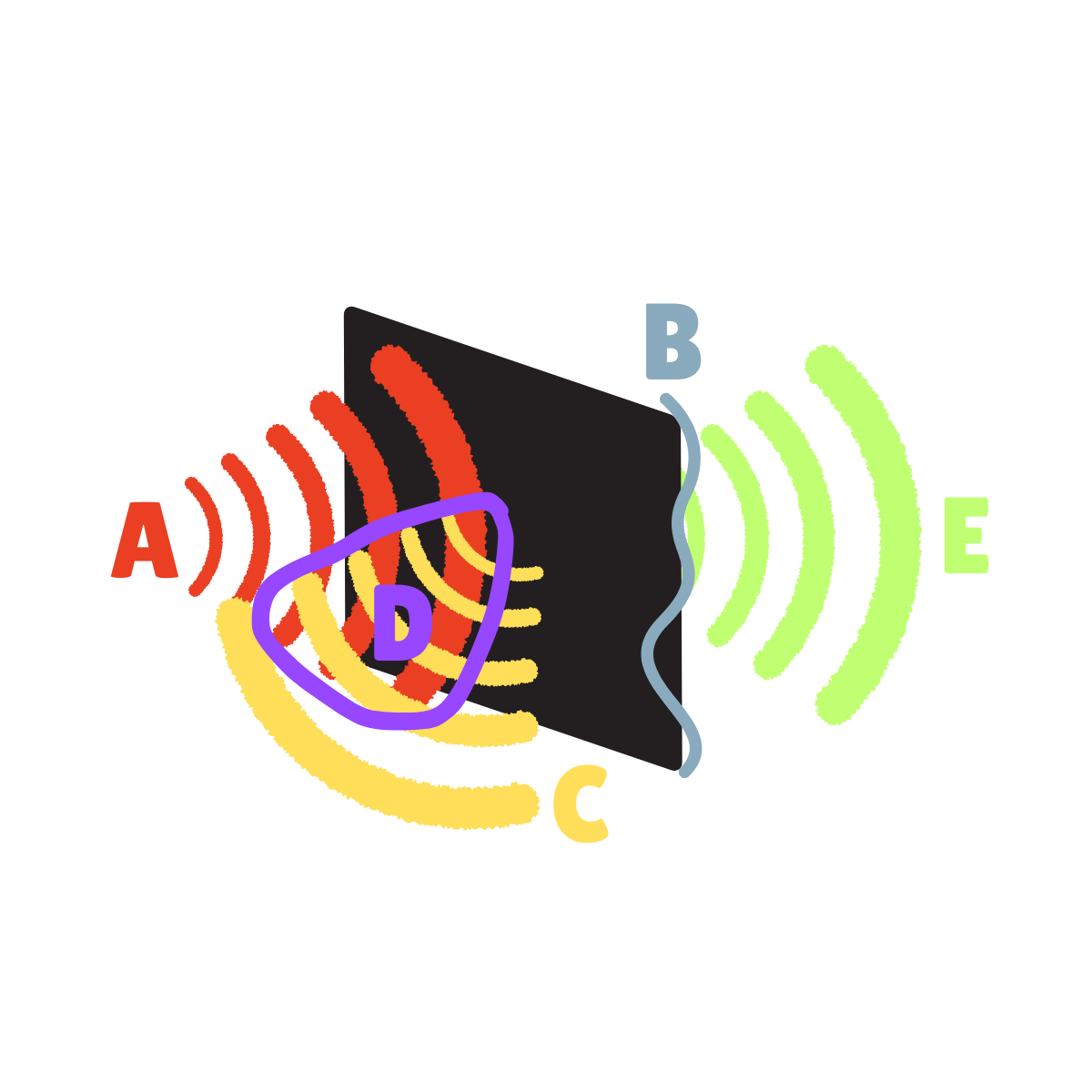
What is happening on step one, aka “A”?
A sound is being generated.
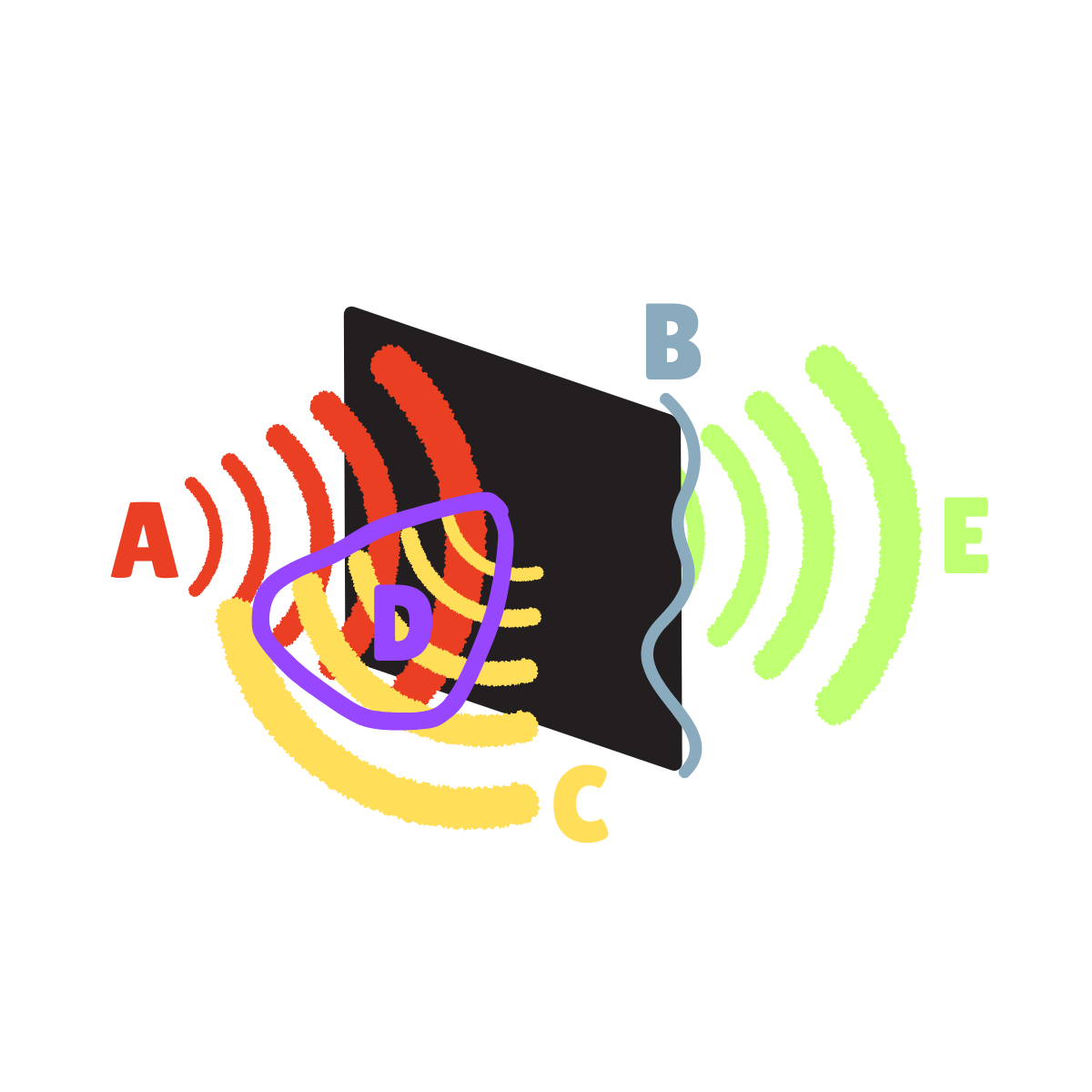
What is happening on step two, aka “B”?
Sound encounters a boundary and is being slightly absorbed (to some degree).
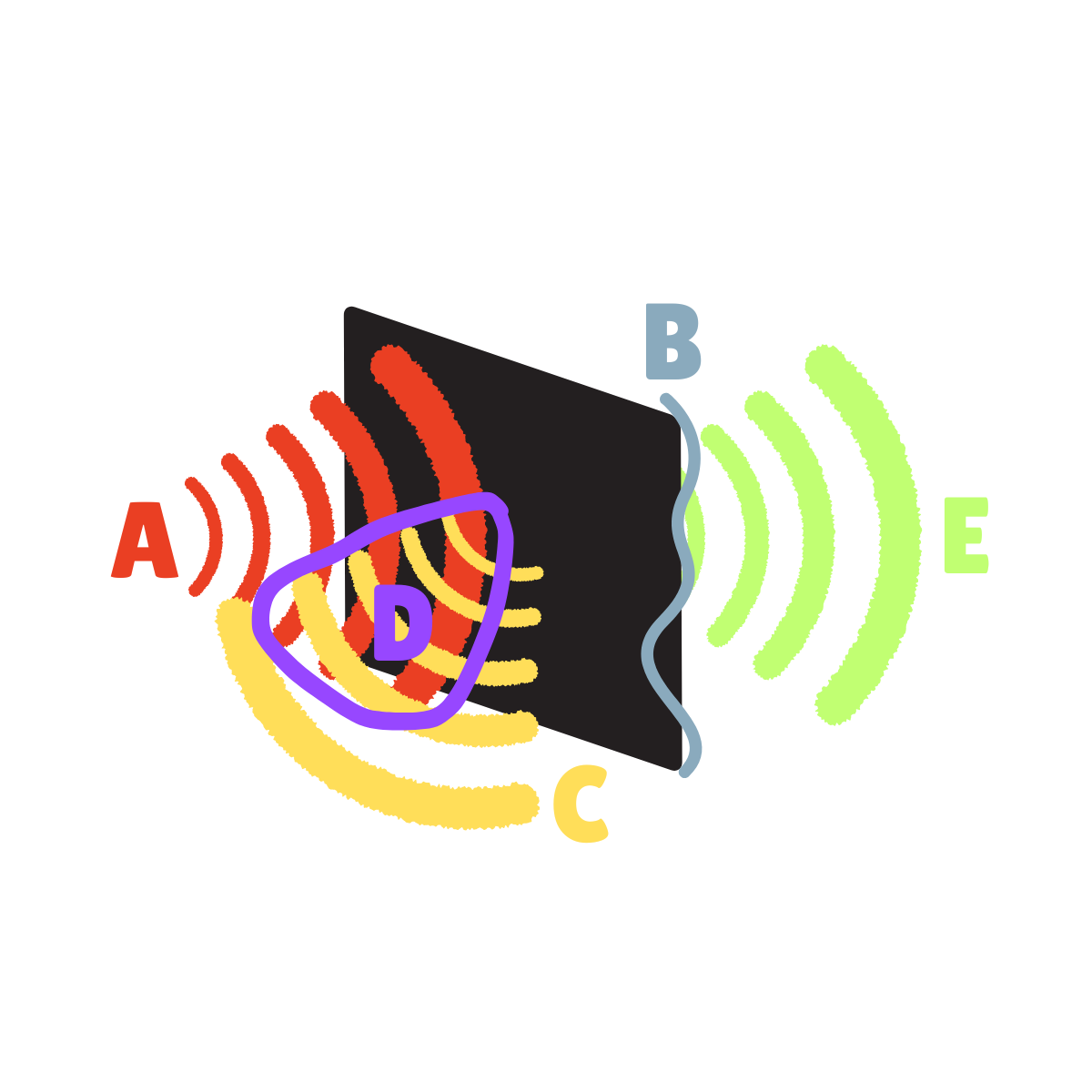
What is happening on step three, aka “C”?
The sound reflects off of the boundary, bouncing back into the space.
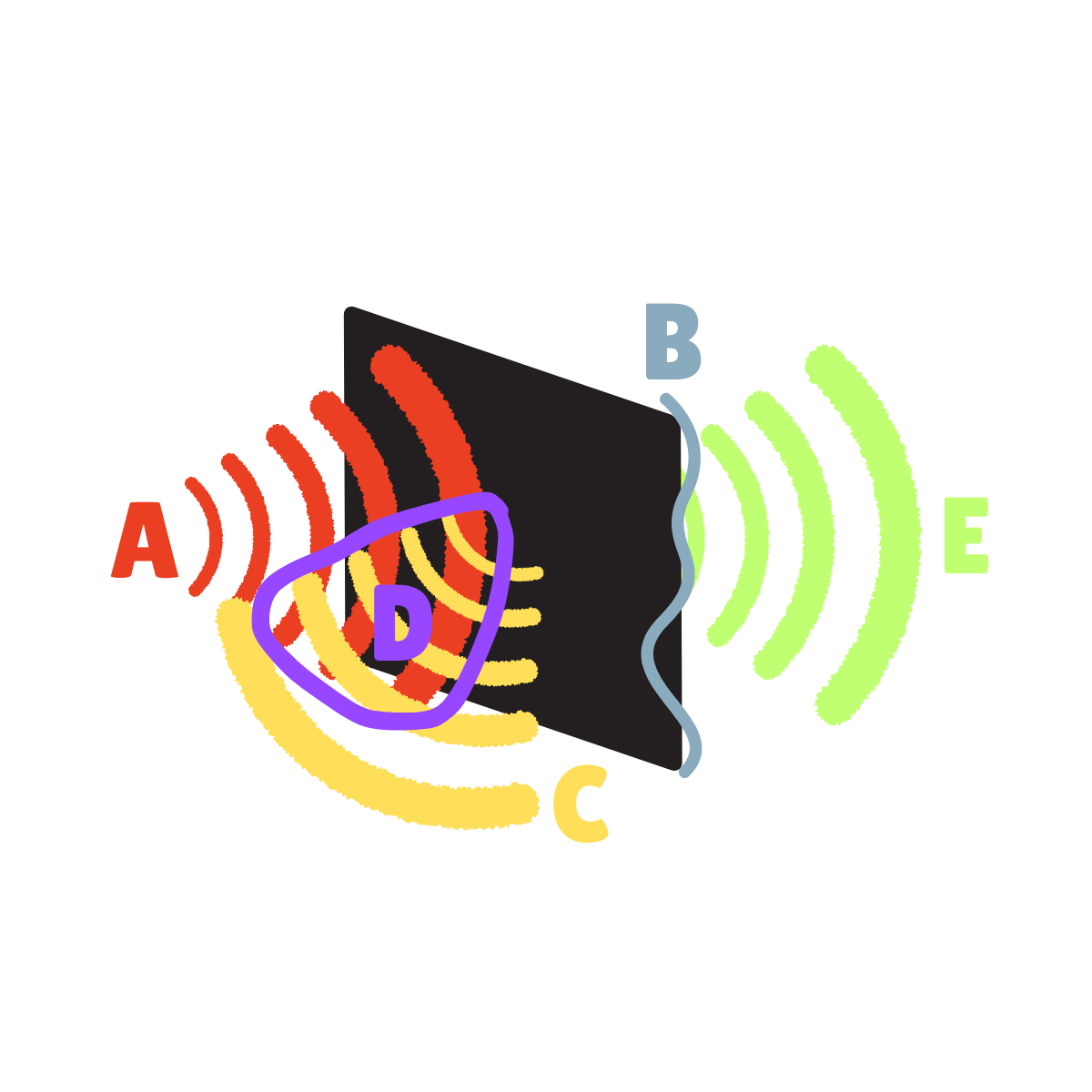
What is happening on step four, aka “D”?
This is reverberation, where the sound overlaps with the original signal.
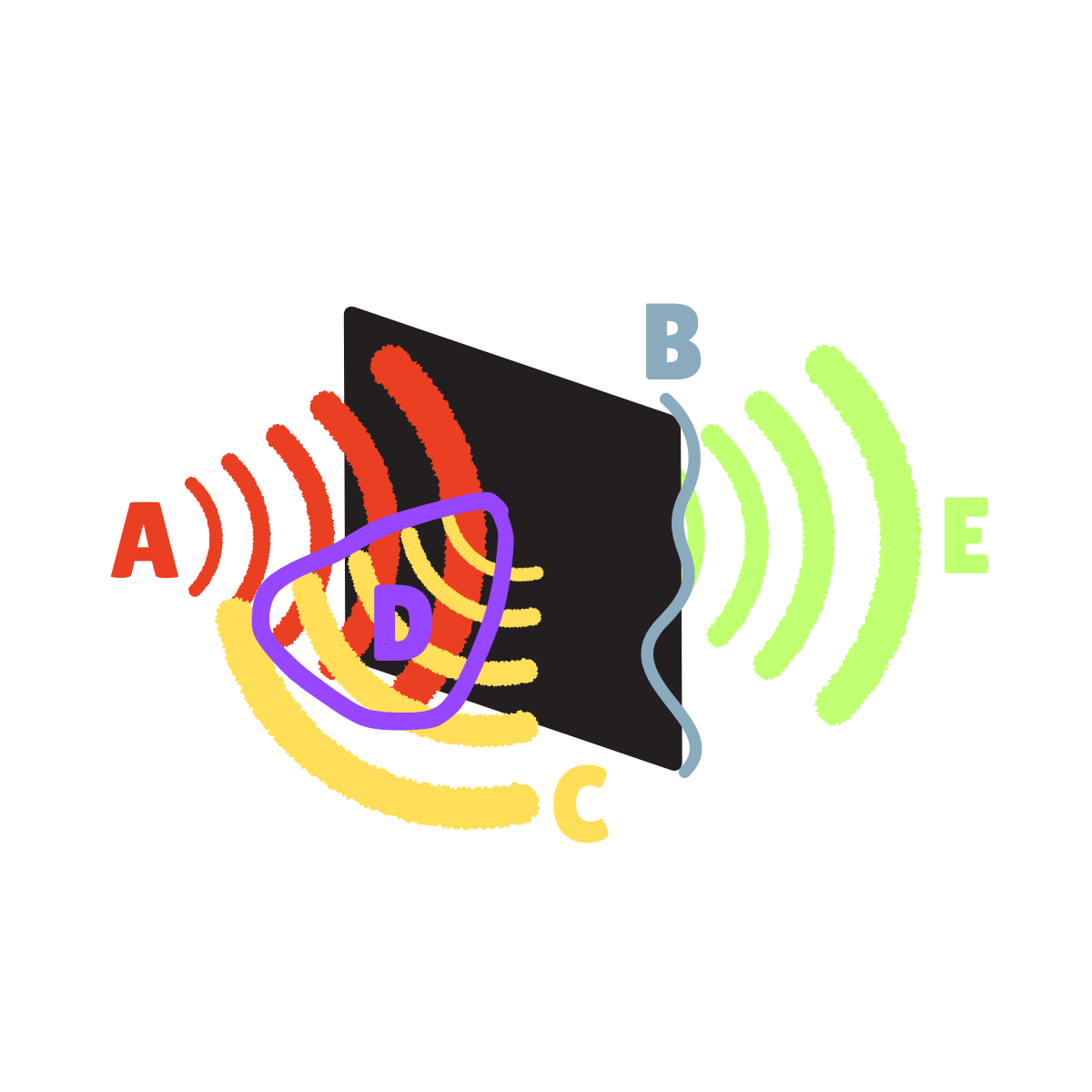
What is happening on step five, aka “E”?
This is refraction, where the sound is heard through the barrier via traveling through it.
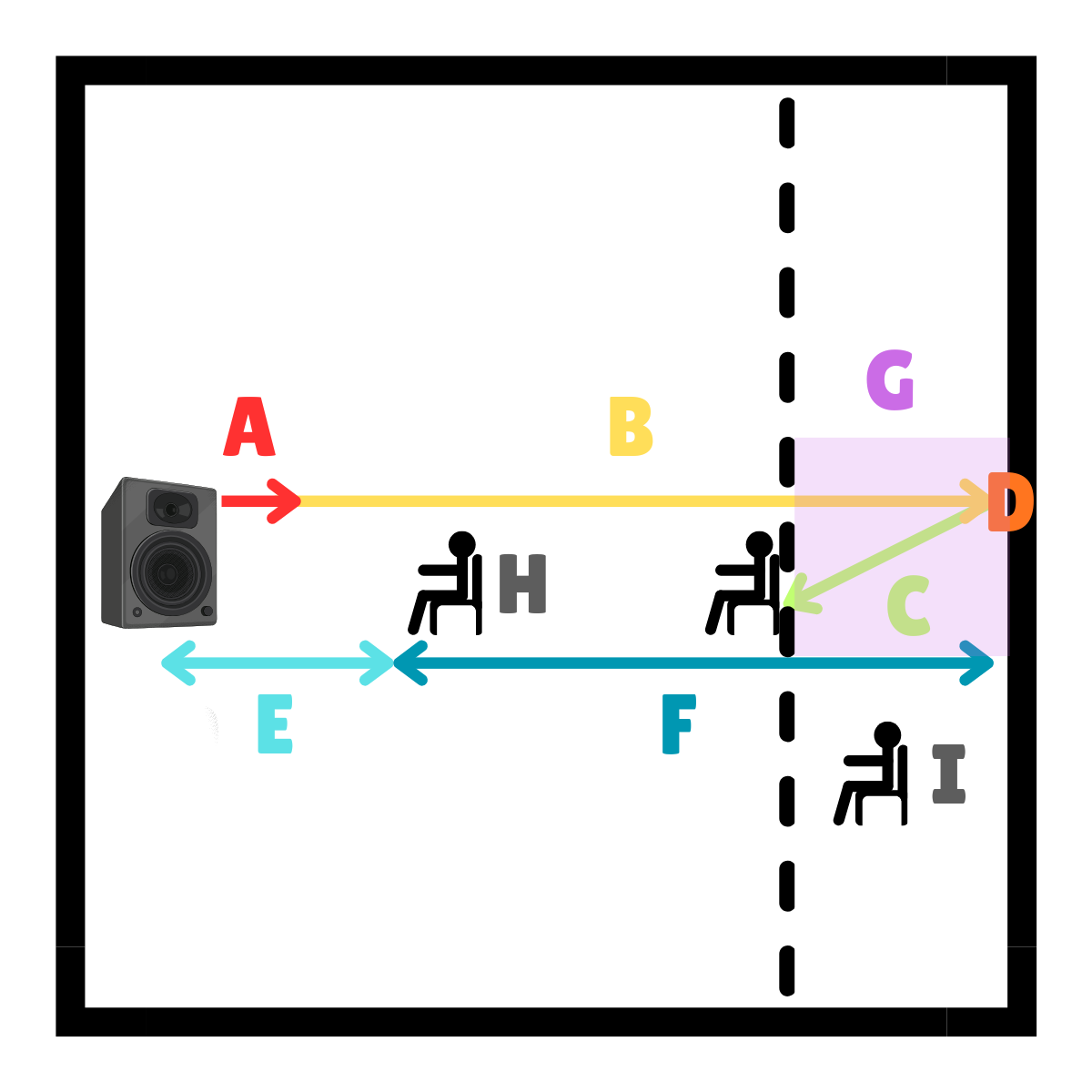
Describe A:
Near Field: area closest to the sound source where there will be greater variation in sound pressures.
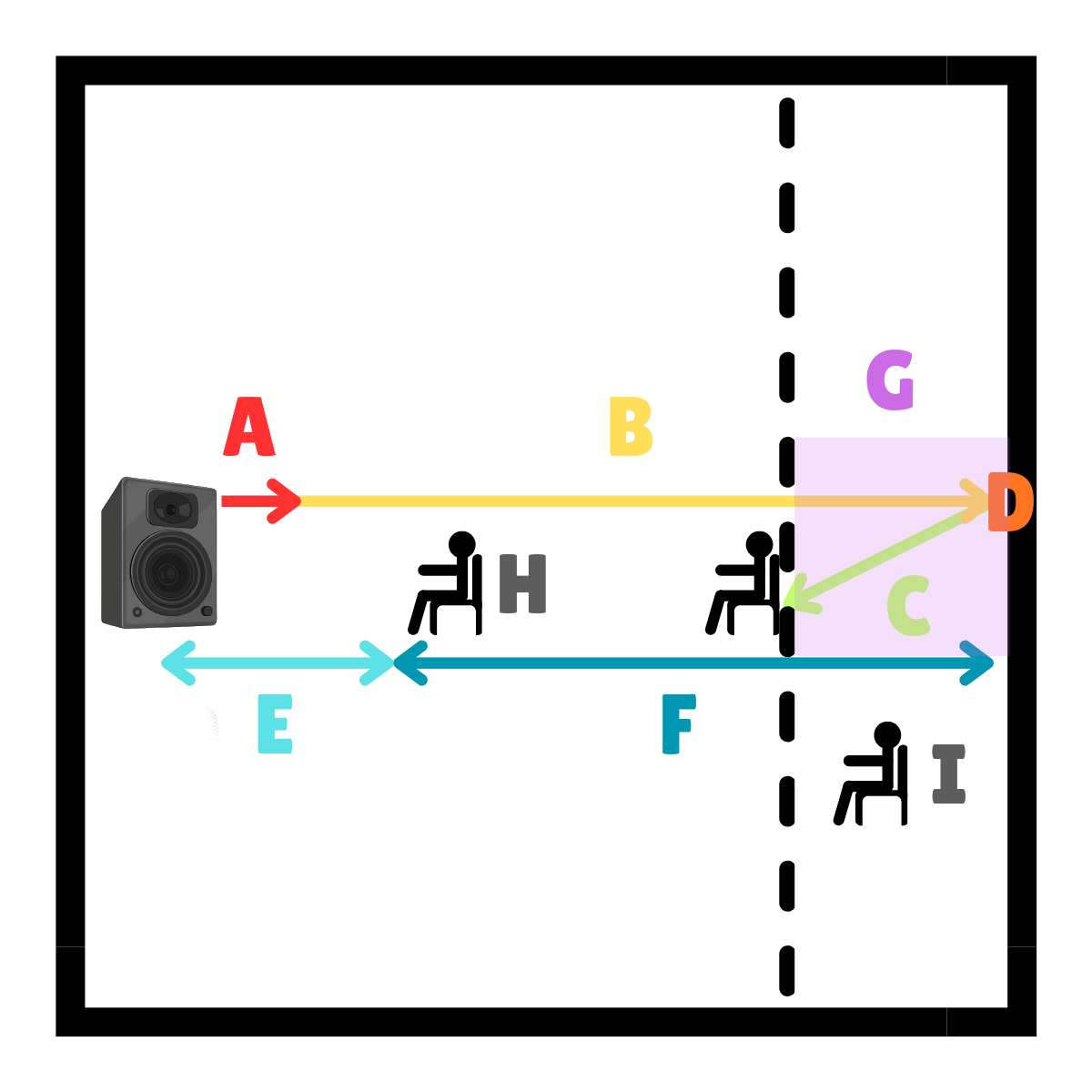
Describe B:
Far Field: area moving away from my sound source where my sound pressures become more uniform.
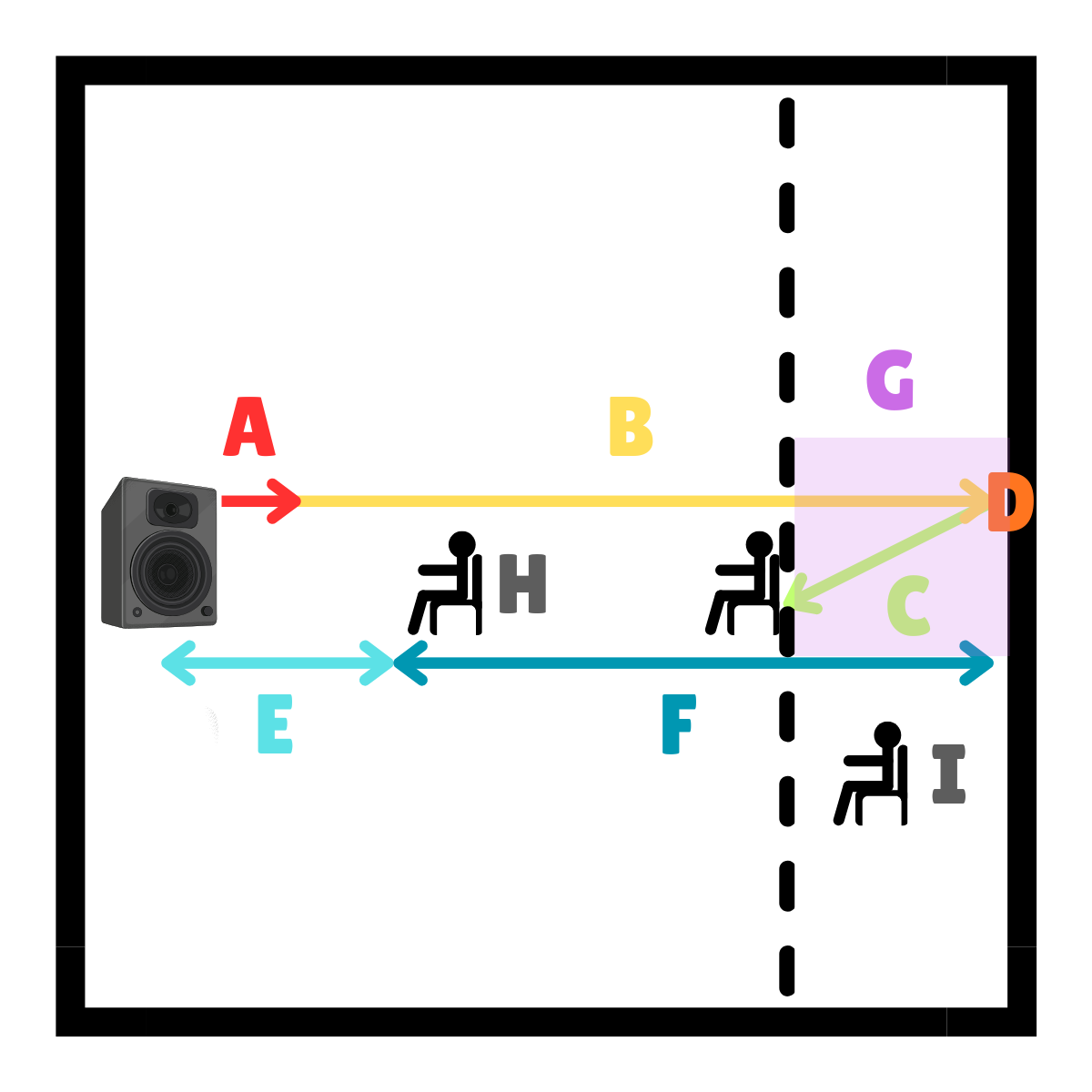
Describe C:
Reflection: When sound encounters a boundary and it bounces back into the space. Most energy is reflected back as well.
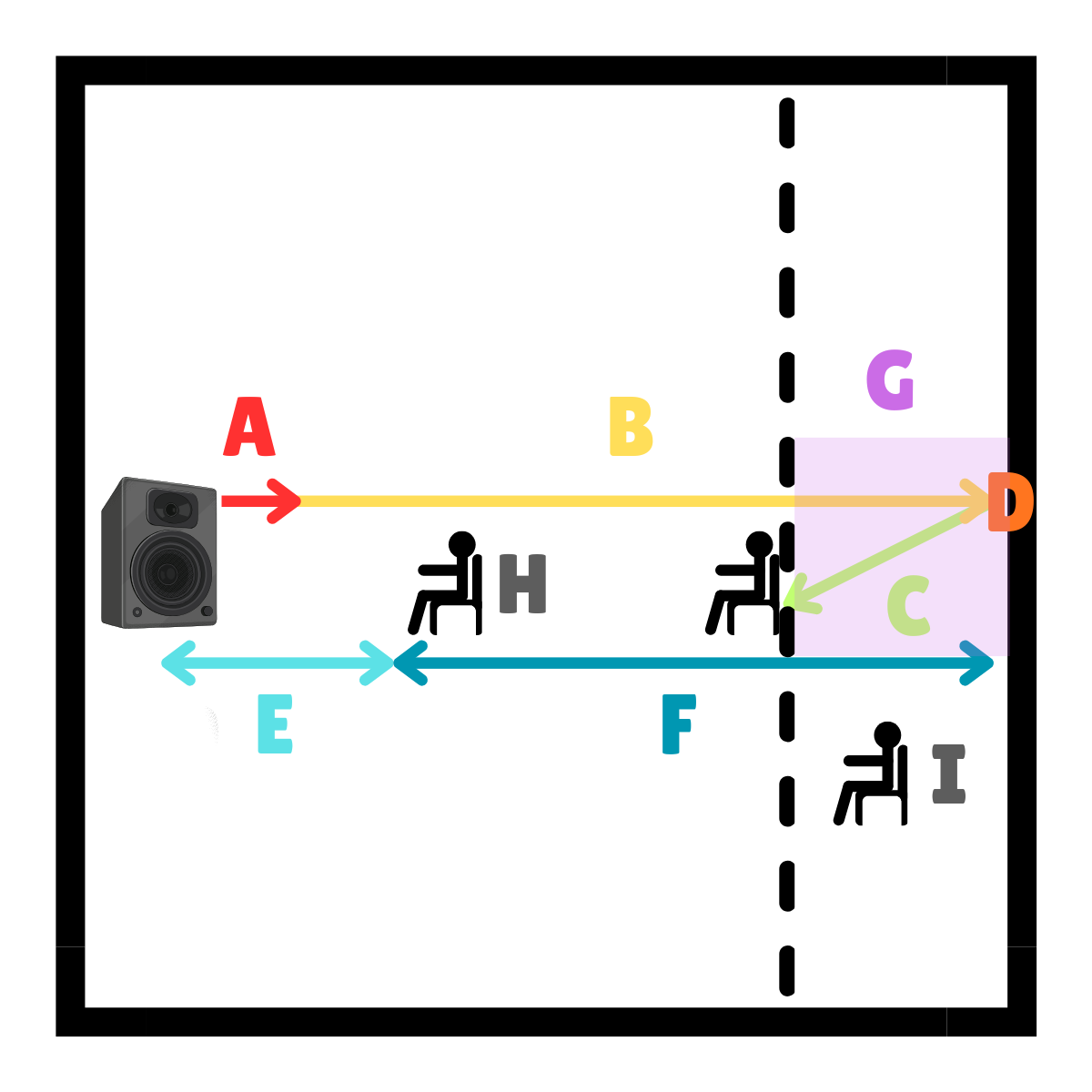
Describe D:
Absorption: a loss of energy when sound encounters a boundary. Deals with internal (thermal) and external (when two objects collide) friction.
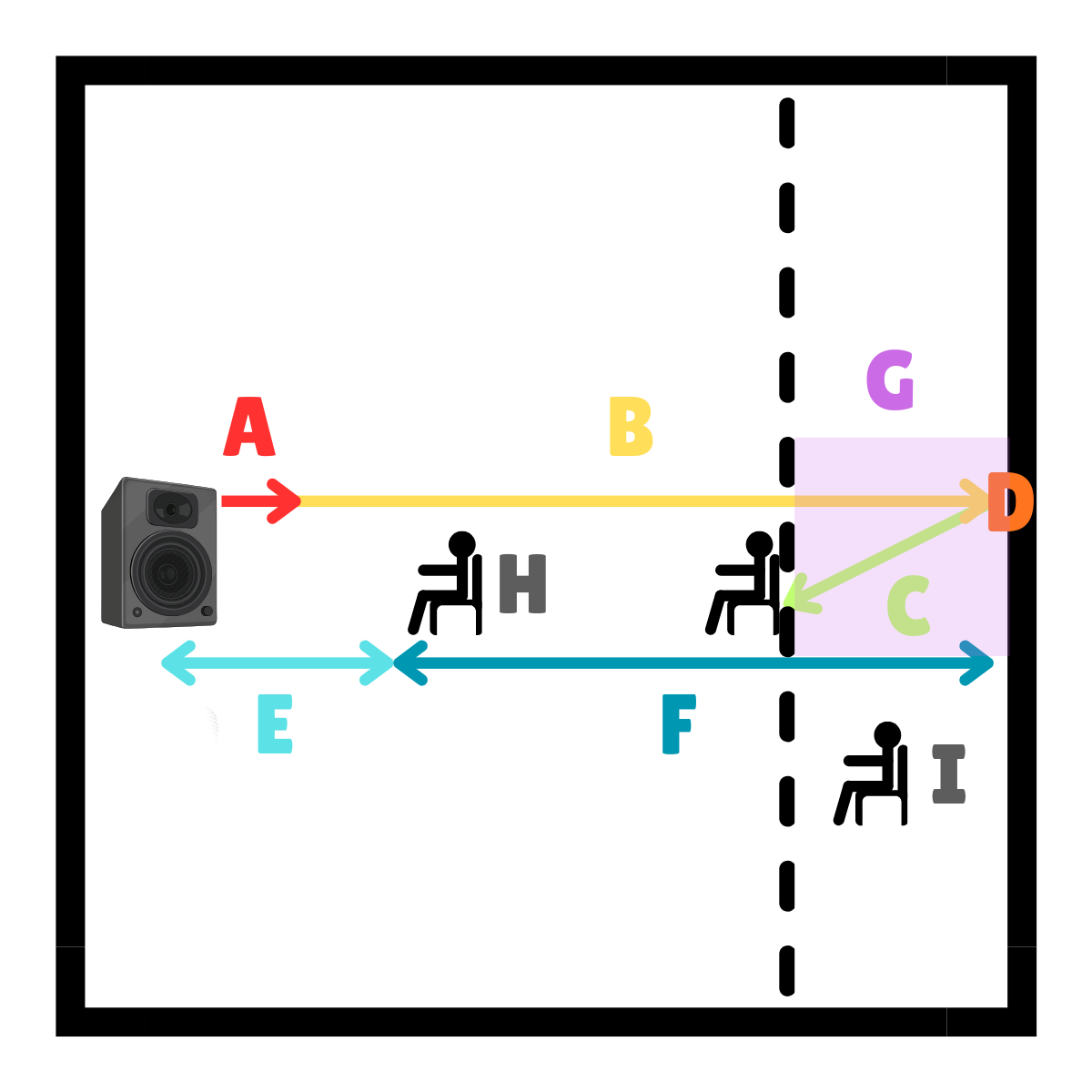
Describe E:
Direct Field: area between my sound source and my first obstacle.
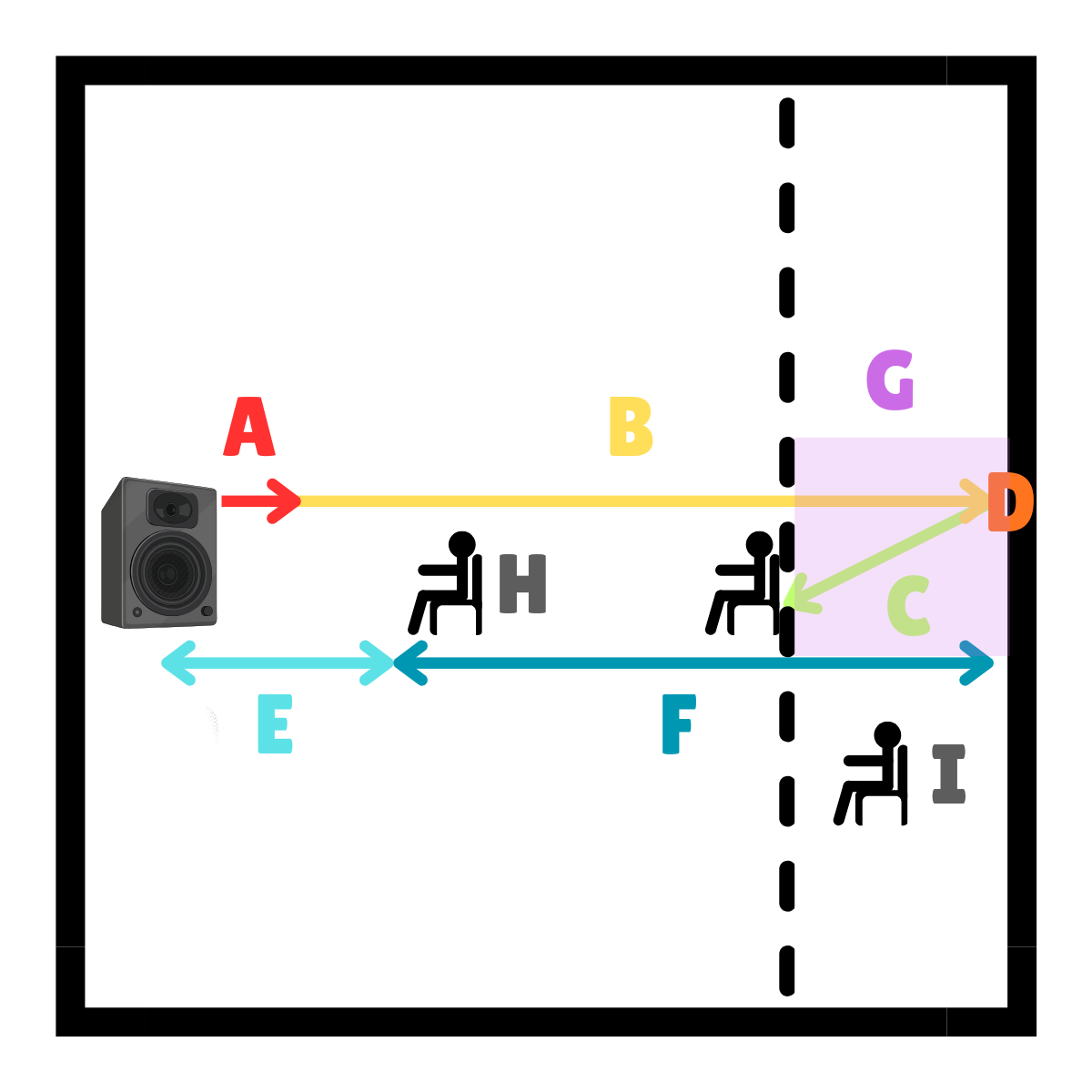
Describe F:
Indirect Field: area from the first obstacle, all the way to the back wall. Also the area that contains reverberation.
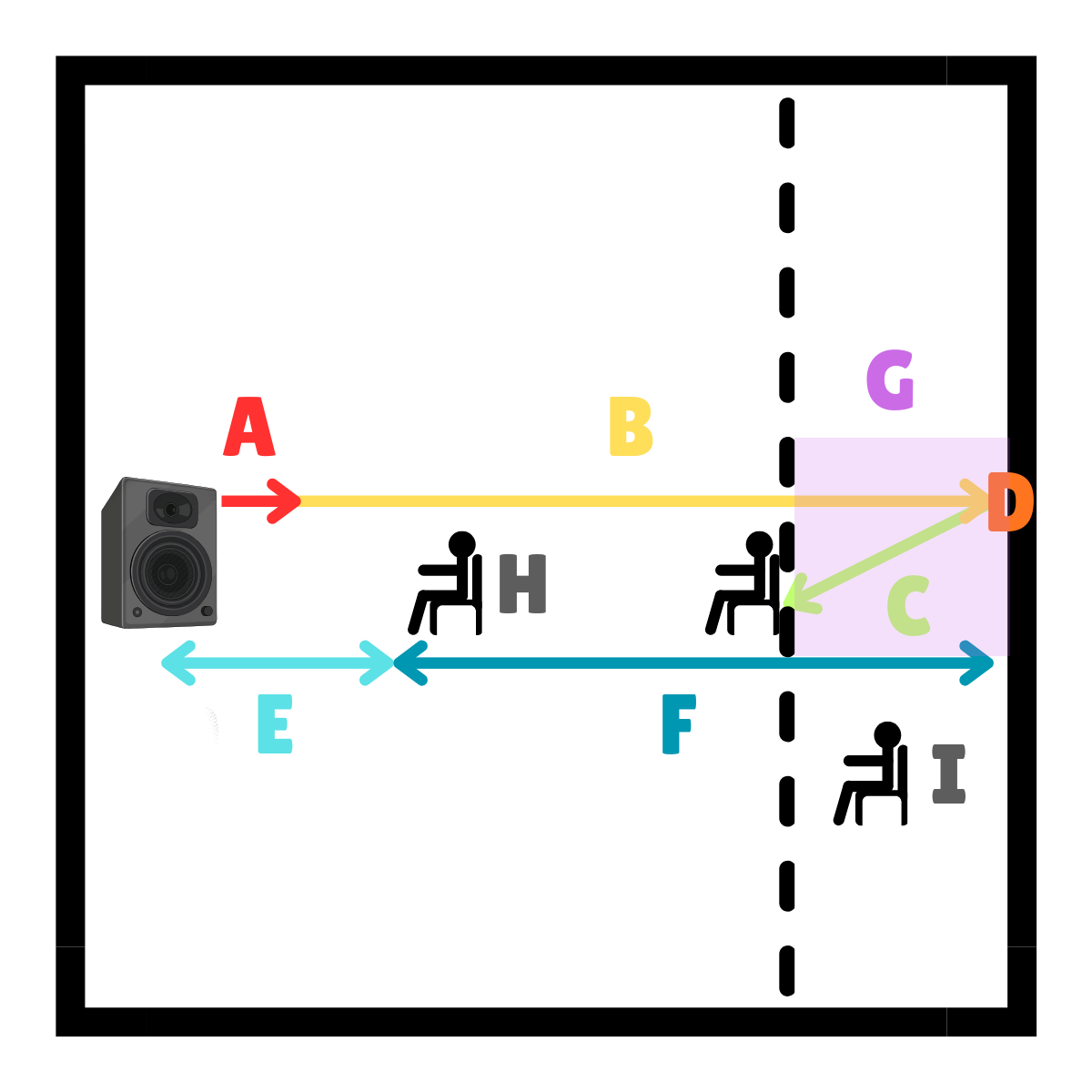
Describe G:
Reverberation: when sound encounters an obstacle in a poor, negative acoustic environment, and it overlaps the original signal. This is a shorter amount of time to get reflected (faster paced).
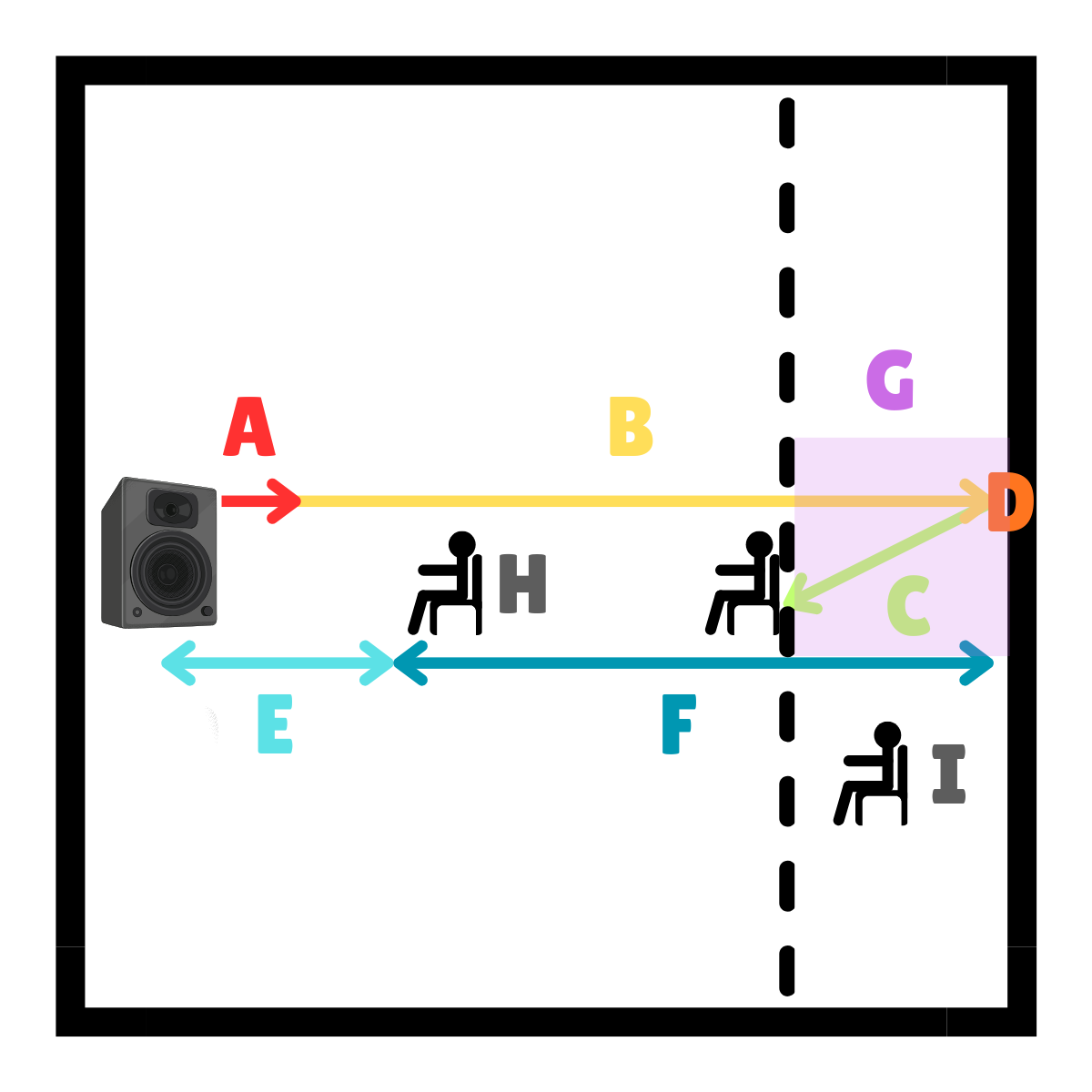
Describe H:
Positive SNR Ratio: If the signal is louder than the background noise, then we have a good signal to noise ratio (+SNR).
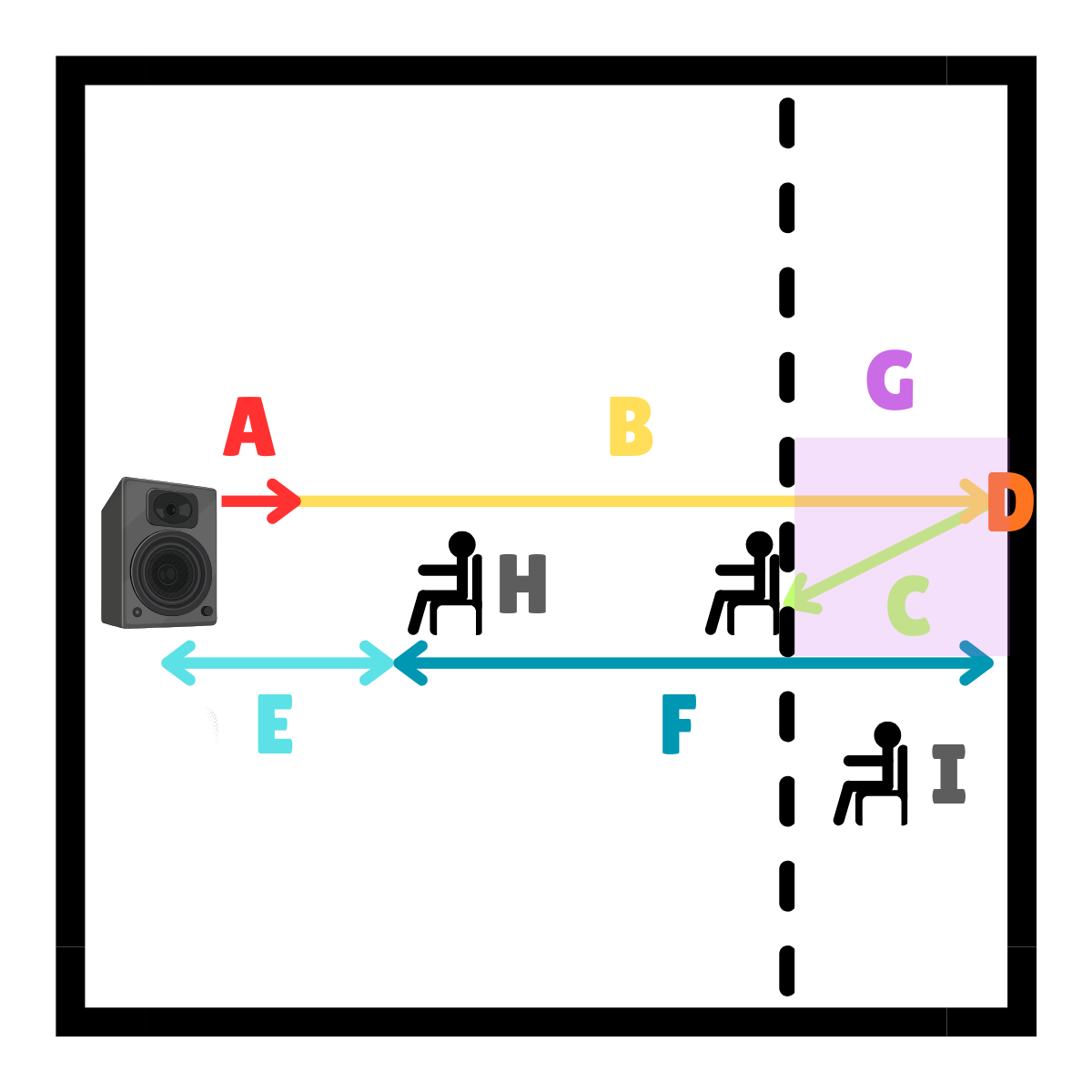
Describe I:
Negative SNR Ratio: If the background noise is louder than the signal, then we have a poor signal to noise ratio (-SNR). This is bad since it causes us to miss information
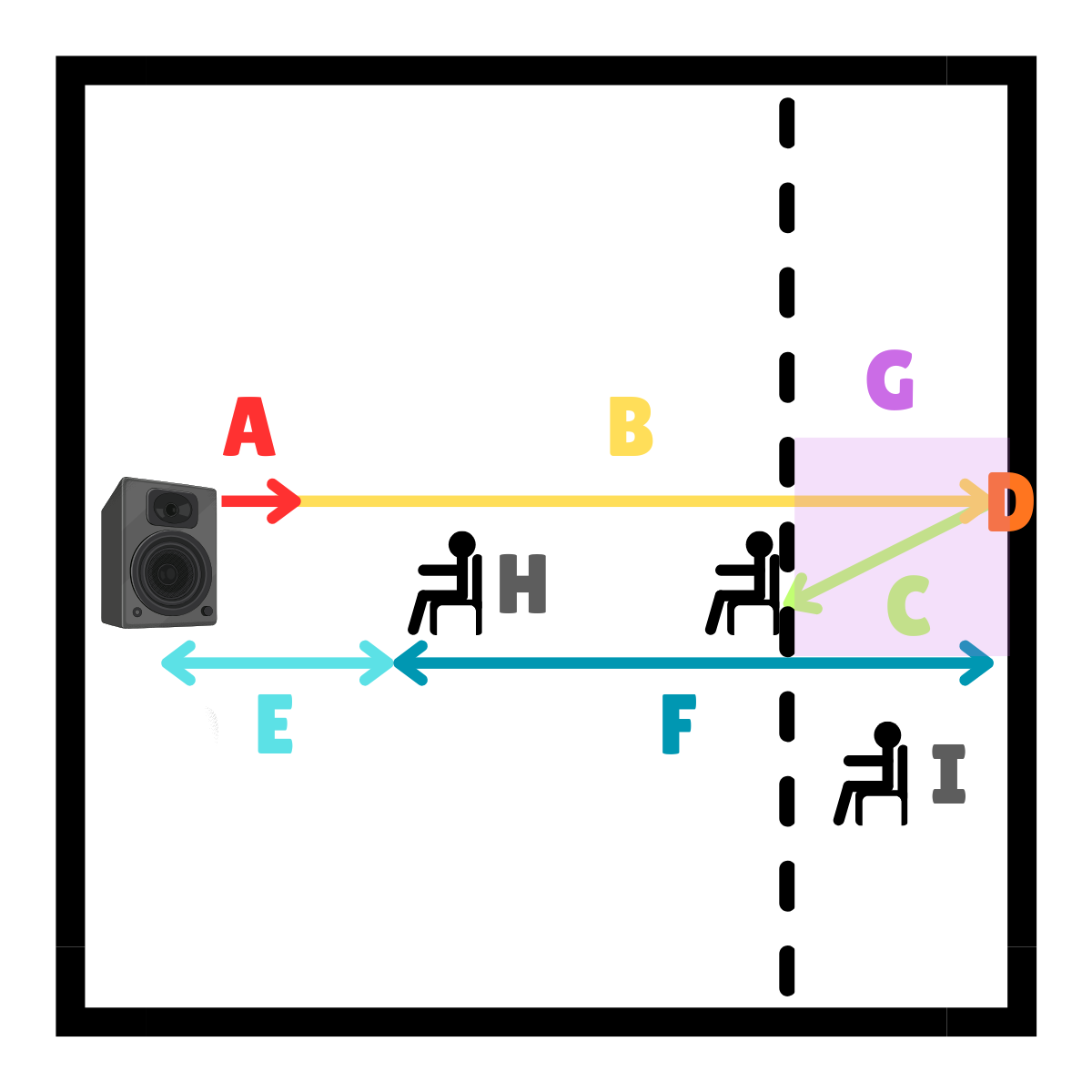
Please explain what is happening to sound in a classroom using the four acoustic phenomena: absorption, reflection, refraction, and diffraction.
To put it in a sequence of events:
1) The teacher speaks in the near field / direct field.
2) The sound then travels through the near, direct, indirect, and far fields. The kid closest to them has a positive SNR due to how clear the sound is.
3) When the sound reaches a wall (or boundary), the sound is absorbed (to a degree) into it.
a. After this occurs, the sound transfers through the boundary through a transfer of energy. This is called refraction.
4) The sound reflects off the boundary and thus causes an overlap in sound waves.
5) The overlap in sound waves is the reverberation.
6) The kid sitting at the critical distance (the point in the room where one will most likely see reverberation and overlapping sounds) will have a negative SNR due to the confusing overlap.
7) Once the wave reaches an obstacle, say a kid or a table, the traveling sound must decide where it wants to go. This is diffraction.
a. If the obstacle is larger than the wavelength, with a higher frequency, the obstacle creates a shadow where no sound enters it. This is the head-shadow-effect.
b. If the obstacle is smaller than the wavelength, with a lower frequency, the sound wave bends around the obstacle.
What is “strategic seating” and why is this term/strategy preferred over “preferential seating?”
Strategic Seating is when you place an individual in a spot based off accommodations or their needs to improve their focus and overall engagement. It optimizes a student’s learning space rather than placing a kid where it would be convenient or preferred. Preferential Seating is considered to be biased with an addition of favoritism. One could think one is seated in a certain area to get an advantage. It’s static and places the individual with HL in the front of the room, but this might not always provide best access to sound and/or visual cues.